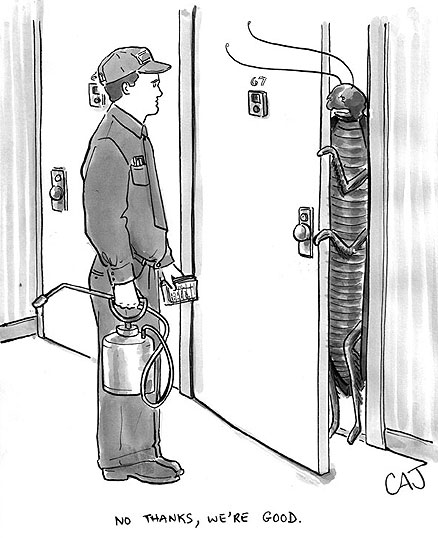 October 5th, 2007 top of the 8th inning on cool evening with the game tied 1 to 1. 80,000 fans are on their feet and the teams are in an fierce battle with post season lives on the line. Both the Yankee players as well as the Cleveland Indians are intent on winning no matter what the cost. Pitchers are throwing their best stuff while hitters are fighting off the hurlers with broken bats, foul tips and anything that will keep them alive to swing again. Neither group of seasoned professionals willing to give an inch. This fall classic has all the ingredients of an epic climax.
October 5th, 2007 top of the 8th inning on cool evening with the game tied 1 to 1. 80,000 fans are on their feet and the teams are in an fierce battle with post season lives on the line. Both the Yankee players as well as the Cleveland Indians are intent on winning no matter what the cost. Pitchers are throwing their best stuff while hitters are fighting off the hurlers with broken bats, foul tips and anything that will keep them alive to swing again. Neither group of seasoned professionals willing to give an inch. This fall classic has all the ingredients of an epic climax.
No one saw it coming, not the dozens of lawn crew that manicured the field that day, not the facilities manager who has personally watched each piece of sod installed and directed the aim of every sprinkler. Not even the players who warmed up just hours before the game even reported seeing a bug. Seemingly out of nowhere millions upon millions of flying bugs descended upon the players making it almost impossible to continue the game. Just as if it were a freak snow storm or a power outage there was little to nothing anyone could do. How could this happen? With all of the preparations, experts on hand and modern technology the only defense left to these finely tuned athletes was to swat and wave the bugs away from their faces to try and see clearly enough to continue playing the game. It took 4 extra innings to end it and Yankee fans probably feel robbed by something as small as a gnat.
For the record Ron Harrison an entomologist from Orkin Inc. told reporters that it was a type of Midge that invaded that night. A bug  related to mosquitoes but without the biting mouth parts of its relative. Well that is one silver lining. Perhaps not quite as dramatically and maybe without as much on the line, bugs seem to invade our homes and despite some of our best efforts including a professional pest control service we are left feeling as hapless as a batter in that game facing a 3 and 2 count with 4000 bugs buzzing your face.
related to mosquitoes but without the biting mouth parts of its relative. Well that is one silver lining. Perhaps not quite as dramatically and maybe without as much on the line, bugs seem to invade our homes and despite some of our best efforts including a professional pest control service we are left feeling as hapless as a batter in that game facing a 3 and 2 count with 4000 bugs buzzing your face.
How Do Pests Enter Our Home
Well we all like to think of our home as an impenetrable castle but the truth is it can be very porous when it comes to keeping invading bugs at bay. Short of putting a ‘bug cam’ on a roach we may never know all of the entry points but the following paragraphs may help us all better understand the mind of a roach. The# 1 reason is the ability of pests to fly, travel on almost any surface, tunnel, chew, flatten, detect dangers, sense heat and air currents or just being able to take advantage ‘quickly’ of an open opportunity. The #2 reason is our home itself. No home regardless of how modern can be sealed up enough to keep pests out 100% of the time.
Early in my career we had an account for a major defense contractor. Among the rooms we serviced were what they called “clean rooms”. You could only use certain products and had to wear the equivalent of a ’space suit’ just to enter. What’s more just to get in you needed to step into a ‘decontamination foyer’ wait for the green light and then proceed. I often wondered why they would go to so much trouble building the bugs and germs out yet still feel the need for me to treat inside the room? Oddly enough I would find a rogue earwig or wayward roach from time to time. As construction practices get better this is changing for our homes but unless we go to the herculean efforts of such facilities we will always have to deal with at least a few invading pests.
 Insects can get in by seemingly obvious means. An open door or window with a not so tight screen offers all the opportunity needed. But is it that simple? Sure if you’re discussing a fly or an occasional wasp. How about a flying roach or a spider? WHAT? A FLYING Spider?—–Hold on we’ll get to that, let’s talk about the roach first. Yes roaches fly. Ok not all of them but I’ll put the skill of an Asian Roach in flight up against any fly. Also American, Australian, Cuban, Brown Banded, Smoky Brown as well as a host of others can take to the air. German Roaches can’t so much fly but sort of flutter from heights to lower ground. Beetles fly even though you can’t see their wings; ants can swarm in, gnats etc. So many insects can fly its incredible. Now if the door is open that’s an easy one…….or the garage door isn’t sealed up ok……But how is it possible for a 1 1/2 inch roach to end up in my living room at 9:30 at night while I’m trying to watch a baseball game.
Insects can get in by seemingly obvious means. An open door or window with a not so tight screen offers all the opportunity needed. But is it that simple? Sure if you’re discussing a fly or an occasional wasp. How about a flying roach or a spider? WHAT? A FLYING Spider?—–Hold on we’ll get to that, let’s talk about the roach first. Yes roaches fly. Ok not all of them but I’ll put the skill of an Asian Roach in flight up against any fly. Also American, Australian, Cuban, Brown Banded, Smoky Brown as well as a host of others can take to the air. German Roaches can’t so much fly but sort of flutter from heights to lower ground. Beetles fly even though you can’t see their wings; ants can swarm in, gnats etc. So many insects can fly its incredible. Now if the door is open that’s an easy one…….or the garage door isn’t sealed up ok……But how is it possible for a 1 1/2 inch roach to end up in my living room at 9:30 at night while I’m trying to watch a baseball game.
Well let’s not forget that this same flying pest can also walk upside down or at any other angle on almost any surface slick or not, it can also swim on top of water and if need be traverse a short distance under water. It can hide and be transported in with Christmas decor from the attic or be brought in from the store in a sack of potatoes. This bugger can also flatten down to fit through cracks the thickness of a quarter! Or less for the smaller roaches. Now add to all this that a roach can sense heat, air currents, smells, pesticides, light and you’ve got a real dilemma on your hands.
These skills aid a roach greatly when in a wall void. Being able to detect air currents and the like can mean the difference between a grave among your studs and insulation to being free inside your kitchen. I tell most customers it’s comparable to the movie Rambo. Remember when he was stuck in a dark cave and didn’t know how to get out? Well resourceful Rambo simply lit a torch which helped him see but also the flames bent with the air currents and pointed the way out to freedom. Rambo roaches-oh boy, break out the ‘Rambo’ raid.
among your studs and insulation to being free inside your kitchen. I tell most customers it’s comparable to the movie Rambo. Remember when he was stuck in a dark cave and didn’t know how to get out? Well resourceful Rambo simply lit a torch which helped him see but also the flames bent with the air currents and pointed the way out to freedom. Rambo roaches-oh boy, break out the ‘Rambo’ raid.
Besides the obvious there are sometimes 100’s of other entries we don’t see or that we simply overlook. These might include unsealed water spickets, trim boards around windows and doors. Gaps or holes leading into and behind veneer such as brick or stone. Cable wire entry ports or other plumbing, gas or electric type pipes as they enter the exterior wall. Dryer vents both the entry port as well as the vent tube itself if it’s not properly screened. Breaks in a/c ducts such as those in an attic or crawl space can allow pests to enter through the ducts and choose any vent to eventually gain access into your home. Stucco homes often allow a 360 degree entry port where the bottom of the stucco is 4 or 5 inches above grade. Usually there is a 1/4 inch or so gap between the stucco and the slab and it’s more than easy for insects to enter, climb over the bottom plate (sill board) and find entry from there. Fascia and soffits usually offer several entry points into attics and from there the hunt is on to find access to your living areas. Chimney stacks and clean outs are not above suspicion and roof vents also need to be looked at.
Most surprising to me is the bathroom vent pipe. This seemingly innocent pipe is used to keep water pressure even in your commode and flushing freely. It protrudes through the roof and has at its base several inches of water which would prevent any bug I’d suppose. However American Roaches are quite adept at flying onto the roof, crawling down the 15 or so foot pipe and swimming through the small bit of water only to come up into your plumbing. How’s that for a hat trick? Well besides the home itself pest may also ‘hitch’ rides into your homes on pets, in groceries or in that antique clock you just brought home from the flea market. If you having recurring insect problems and your pest professional is hitting all the traditional points perhaps it’s time to think outside the box and look at some of these not so obvious entry points.
The list above is not an exhaustive one to say the least. Add to that that each home is different regardless if it’s side by side and built by the same builder at the same time. You may want to start in the areas where you see the most bugs and with a little detective work you may solve your problem in a few short minutes. It may take more than this so be prepared. Remember don’t limit your search to what you think a bug can or can’t do. At the same time don’t get to crazy –start with the obvious and go from there. Perhaps take a night time tour of the home to see some of the pests around your home you may never have otherwise seen. Also look to where spiders set up shop. They know where the highways and byways are. You can also place a few sticky pads around the home in suspect areas to gage high activity and possible areas of entry. Once you’ve identified some areas it’s time to seal up the home. Caulk, steel wool, hammer and nails whatever you  can do should reduce pest entry and allow for some pest free living. When all is said and done go ahead and place a good insect barrier spray inside and out. This should get any stragglers or those whom you’ve know sealed in the house.
can do should reduce pest entry and allow for some pest free living. When all is said and done go ahead and place a good insect barrier spray inside and out. This should get any stragglers or those whom you’ve know sealed in the house.
Now I promised to tell you how a spider flies and gets onto your home-well just like in the movie Charlotte’s web. The baby spiderlings climb to a high point, cast out webbing and simply ‘balloon’ to destinations unknown. Ballooning spiders have been found 100’s of miles out to see as well as on high rise roof tops. Where ever the wind takes them is where they’ll call home, perhaps even, your home.




